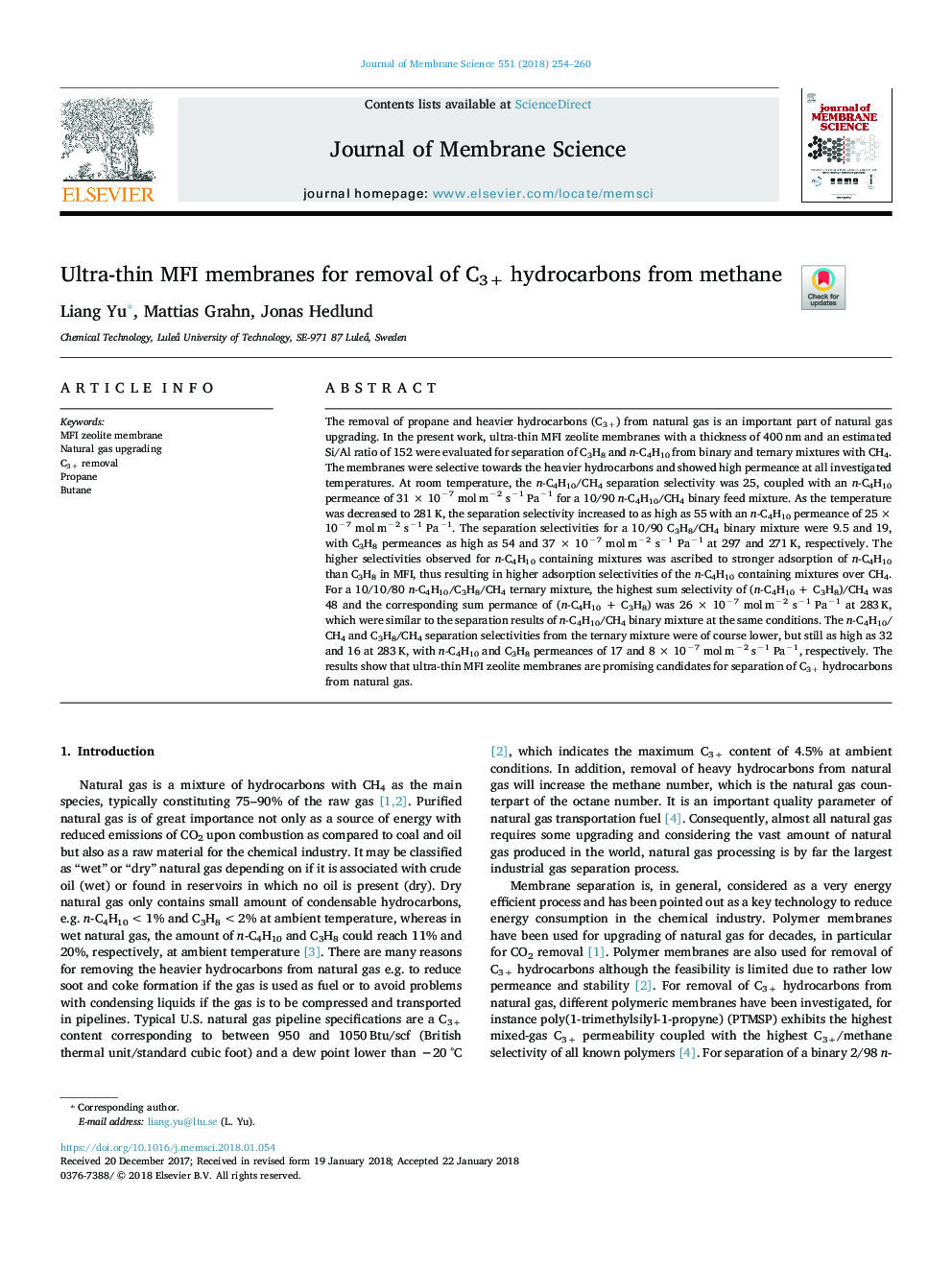| Article ID | Journal | Published Year | Pages | File Type |
|---|---|---|---|---|
| 7020102 | Journal of Membrane Science | 2018 | 7 Pages |
Abstract
The removal of propane and heavier hydrocarbons (C3+) from natural gas is an important part of natural gas upgrading. In the present work, ultra-thin MFI zeolite membranes with a thickness of 400â¯nm and an estimated Si/Al ratio of 152 were evaluated for separation of C3H8 and n-C4H10 from binary and ternary mixtures with CH4. The membranes were selective towards the heavier hydrocarbons and showed high permeance at all investigated temperatures. At room temperature, the n-C4H10/CH4 separation selectivity was 25, coupled with an n-C4H10 permeance of 31 à 10â7 molâ¯mâ2 sâ1 Paâ1 for a 10/90 n-C4H10/CH4 binary feed mixture. As the temperature was decreased to 281â¯K, the separation selectivity increased to as high as 55 with an n-C4H10 permeance of 25 à 10â7 molâ¯mâ2 sâ1 Paâ1. The separation selectivities for a 10/90 C3H8/CH4 binary mixture were 9.5 and 19, with C3H8 permeances as high as 54 and 37 à 10â7 molâ¯mâ2 sâ1 Paâ1 at 297 and 271â¯K, respectively. The higher selectivities observed for n-C4H10 containing mixtures was ascribed to stronger adsorption of n-C4H10 than C3H8 in MFI, thus resulting in higher adsorption selectivities of the n-C4H10 containing mixtures over CH4. For a 10/10/80 n-C4H10/C3H8/CH4 ternary mixture, the highest sum selectivity of (n-C4H10 + C3H8)/CH4 was 48 and the corresponding sum permance of (n-C4H10 + C3H8) was 26 à 10â7 molâ¯mâ2 sâ1 Paâ1 at 283â¯K, which were similar to the separation results of n-C4H10/CH4 binary mixture at the same conditions. The n-C4H10/CH4 and C3H8/CH4 separation selectivities from the ternary mixture were of course lower, but still as high as 32 and 16 at 283â¯K, with n-C4H10 and C3H8 permeances of 17 and 8 à 10â7 molâ¯mâ2 sâ1 Paâ1, respectively. The results show that ultra-thin MFI zeolite membranes are promising candidates for separation of C3+ hydrocarbons from natural gas.
Related Topics
Physical Sciences and Engineering
Chemical Engineering
Filtration and Separation
Authors
Liang Yu, Mattias Grahn, Jonas Hedlund,
